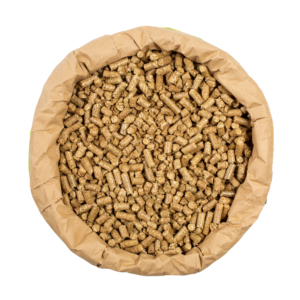€150.00
- Quality: DIN
- Diameter (mm): 6mm – 8mm
- Ash (%): ≤ 2-3%
- Moisture (%): ≤ 10
- Packaging: 15 kg, 16 kg, 25 kg, Big Bags, Loose
- Length (mm): 3,15 ≤ L ≤ 40
- The heat of combustion (MJ / kg): ≥ 18,0
- Abrasion / dust (%): ≤ 1
- Hardness (%): ≥ 97,7
- Bulk density (kg/m3): ≥ 580
DIN Sunflower Pellets For Heating are ideal for both domestic and industrial use. Did you know that the calorific value of sunflower pellets is higher than the calorific value of DIN plus wood pellets? That’s it! The majority of people are unaware of this. Sunflower pellets are excellent for use in the home, and the greatest part is that they are 30% less expensive than wood pellets! Many people in many nations are unaware of these pellets, yet they are becoming increasingly popular. Make sure to give sunflower pellets to your clients; you’ll be glad you did!
DIN Sunflower Pellets Specifications:
- Quality: DIN
- Diameter (mm): 6mm – 8mm
- Ash (%): ≤ 2-3%
- Moisture (%): ≤ 10
- Packaging: 15 kg, 16 kg, 25 kg, Big Bags, Loose
- Length (mm): 3,15 ≤ L ≤ 40
- The heat of combustion (MJ / kg): ≥ 18,0
- Abrasion / dust (%): ≤ 1
- Hardness (%): ≥ 97,7
- Bulk density (kg/m3): ≥ 580
Pellet fuels (or pellets) are a type of solid fuel made from compressed organic material. Pellets can be made from any one of five general categories of biomass: industrial waste and co-products, food waste, agricultural residues, energy crops, and untreated lumber. Wood pellets are the most common type of pellet fuel and are generally made from compacted sawdust, and related industrial wastes from the milling of lumber, manufacture of wood products and furniture, and construction.
Other industrial waste sources include empty fruit bunches, palm kernel shells, coconut shells, and tree tops and branches discarded during logging operations. So-called “black pellets” are made of biomass, refined to resemble hard coal and were developed to be used in existing coal-fired power plants. Pellets are categorized by their heating value, moisture and ash content, and dimensions. They can be used as fuels for power generation, commercial or residential heating, and cooking.
Pellets are extremely dense and can be produced with a low moisture content (below 10%) that allows them to be burned with a very high combustion efficiency. Further, their regular geometry and small size allow automatic feeding with very fine calibration. They can be fed to a burner by auger feeding or by pneumatic conveying. Their high density also permits compact storage and transport over long distance. They can be conveniently blown from a tanker to a storage bunker or silo on a customer’s premises.











Reviews
There are no reviews yet.